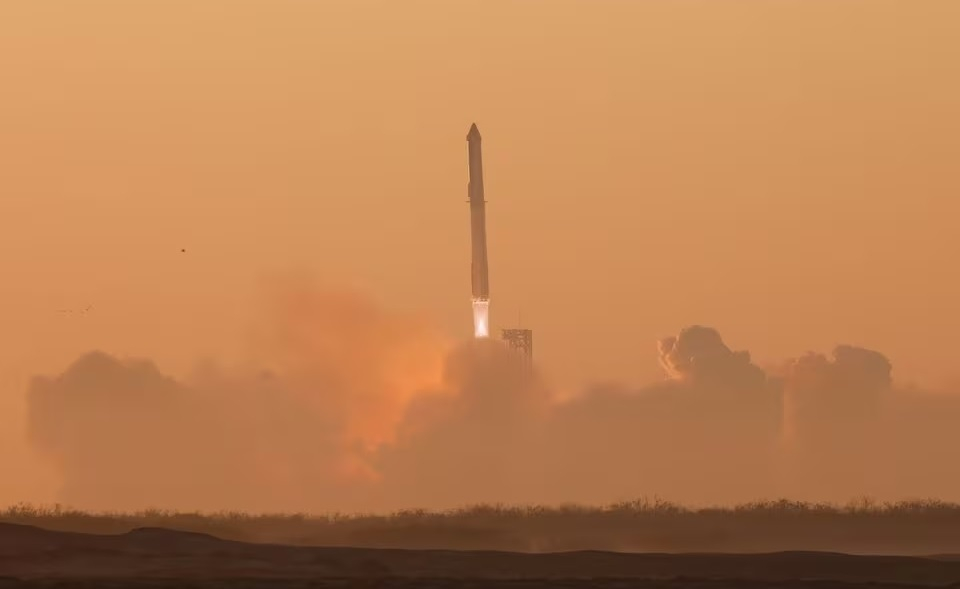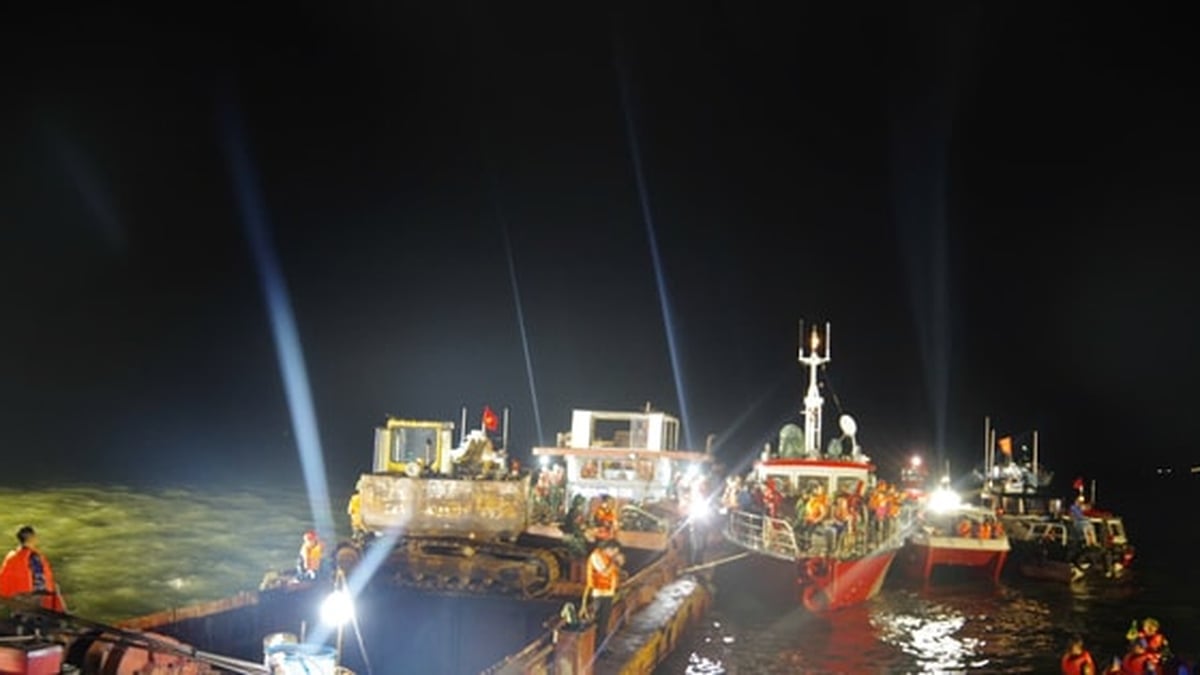The two-stage rocket launched from billionaire Elon Musk's company's Starbase launch site near Boca Chica in Texas, helping to boost the Starship spacecraft to an altitude of 90 miles (148 kilometers) on a planned 90-minute test mission to space and back.

The world's largest rocket, Super Heavy, carrying the Starship spacecraft, has successfully launched in its first stage. Photo: Reuters
However, live video from the launch showed that the Super Heavy rocket, despite achieving the important maneuver of separating from the Starship when reaching a certain altitude, exploded over the Gulf of Mexico immediately after separation.
Starship continued flying into space afterward, but minutes later, SpaceX's television station said SpaceX mission control suddenly lost contact with the vehicle.
“We lost data from the second stage… we think we may have had a second stage failure,” said SpaceX engineer and live host John Insprucker. Engineers believe an automatic flight termination command was triggered to destroy the rocket, he added, though the reason is unclear.
About eight minutes into the test mission, the Starship tracking camera view showed an explosion. The spacecraft's altitude was 148 kilometers.
This is the second test launch attempt of the Starship mounted on its world's largest Super Heavy rocket, after an attempt in April also ended in an explosion just four minutes after liftoff.

The launch took Starship to an altitude of 148 km before exploding. Photo: AP
The US Federal Aviation Administration, which oversees commercial launch sites, said it would oversee a SpaceX-led investigation into the test failures and would need to approve SpaceX's plan to prevent it from happening again.
The goal of the test launch was to lift Starship off the ground in Texas and into near-orbital space, then plunge through Earth’s atmosphere to splash down on the coast of Hawaii. The launch was scheduled for Friday but was pushed back a day due to a hardware failure.
A fully successful test would mark a major step in SpaceX's ambition to produce a super-large, multi-purpose spacecraft capable of taking people and cargo to the Moon for NASA by the end of the decade and eventually to Mars.
Hoang Anh (according to NASA, SpaceX, Reuters)
Source


































































































Comment (0)